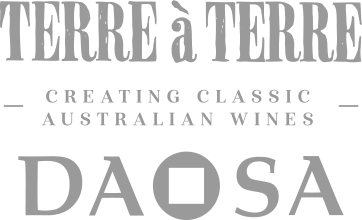Somehow I was found myself moving in the direction of Aussie Claret after a sustained period enjoying a number of examples — modest examples — of the French kind. The somewhere was London in the mid- eighties, when availability of Australian wine in the U.K. was far from widespread.
What specifically got me seeking out these reds from a far away land I can’t recall, but it was most likely stimulated by the evocative words of peerless English wine writer, Hugh Johnson in his wonderful volume, Hugh Johnson’s Wine Companion (1983, six editions). It had an incredibly detailed section on Australia even back then. The lyrical Johnson has also authored beautiful works on trees and gardening, but it was his vinous eloquence that inspired me, and he’s long been a fan of wines from our neck of woods (if you’ll excuse the arboreal pun).
As suggested above, one needed to search out stockists with decent selections of Australian wine, as crazy as this now seems. Two speciality wine merchants I remember: one was Ostlers on the periphery of the so-called, City; the other (I think) named Findlater in St. John’s Wood (or thereabouts).
It was from the latter that I acquired my first two Aussie Clarets: Brown Brothers Meadow Creek Shiraz Cabernet Sauvignon, a wine last bottled from the ’88 vintage; and a certain Penfolds Bin 389 Cabernet Shiraz which — fairly obviously — enjoys a formidable reputation today. Neither of these wines were labelled Claret, although 389’s stablemates St. Henri and Koonunga Hill were labelled as such until the 1989 and 1991 vintages respectively.
New French Claret
It would appear that claret — such a comforting word for a medium to full-bodied red — first entered English wine vernacular in the early 1700s. According to Professor Tim Unwin’s, Wine and the Vine, An Historical Geography of Viticulture and the Wine Trade (Routledge, 1991), the ‘Book of Expenses’ of one John Hervey, first earl of Bristol, lists numerous illustrious entries.
In 1703 the purchase of ‘…a single hogshead of “Margoose claret”…’. In 1720 ‘La Tour Claret’, while ‘La ffittee Clarett’ in 1721 and 1724 sold for £43 a hogshead. Unwin writes that these wines were known at the time as ‘New French Clarets’. This use of claret is not be confused with the short fermentation, stylistically quite different wines known as vinum clarum, bin clar, and clairet, although the word claret is derived from the latter (these details also courtesy of Unwin’s incredible tome).
So we have claret, such a quintessentially British wine trade word — and which still appears on merchant and supermarket labels in the U.K. — and determined as being red wines of Bordeaux. But the concept of claret travelled far further, and little wonder the style and name emigrated south when the vine and winegrowing journeyed to Australia.
The entry on claret in ‘…the greatest wine book ever published…’, The Oxford Companion to Wine (Jancis Robinson and Julia Harding (eds.), Oxford University Press, 2015) makes this observation: ‘Claret has also been used as a generic term for a vaguely identified class of red table wines supposedly drier, and possibly higher in tannins, than those sold as generic burgundy (although in the history of Australian wine shows, it has been known for the same wine to win both the claret and burgundy classes).’
New Australian Claret
When I ventured to Australian shores in 1987 my new-found friendship with Aussie claret of the Cabernet Sauvignon Shiraz (and vice-versa) sort continued, despite the obsession for mono-varietalism seemingly all around me. From about this time two wines spring to mind, albeit for different reasons.
One is Wirra Wirra’s Church Block Cabernet Sauvignon Shiraz Merlot which was ubiquitous on Sydney wine lists, especially in pubs of the gastro-kind. At one lunch in Balmain the waiter presented us with the bottle for inspection, before grabbing it by the neck, flipping it through the air, catching the bottle with the opposite hand, and then flamboyantly pulling the cork. Cocktail claret. Bryan Brown and Tom Cruise had a lot to answer for I thought at the time.
A somewhat more serious sensory experience transpired at a barbecue in Bondi Junction. It was the tasting of Brokenwood’s sublime 1985 Cabernet Sauvignon Hermitage, fruit from Coonawarra and the Hunter respectively. It was quite exceptional — thought provoking as well as comforting — and the first ‘serious’ Australian wine vividly recollected from my early Australian years, before I began working in the trade and later began writing about wine.
Other great examples have followed. Numerous Yalumba Signatures and Wolf Blass Black Labels, and more than anyone really deserves of Yalumba Galway Claret. The last was a ’67 tasted a year and a half ago and it was still in fine drinking condition. And speaking of 1967: Bin 7 Coonawarra Cabernet Sauvignon Kalimna Shiraz anyone? A wine of legend. And there’s another Penfolds claret of considerable international repute: 1962 Bin 60 Coonawarra Cabernet Kalimna Shiraz, the forerunner of Bin 7. It happens to be one of Xavier Bizot’s most admired Australian wines.
So too is Petaluma’s 1979 Coonawarra — which is also one of mine — a sixty-forty Shiraz Cabernet blend, a wine I first tased in December 1996. The Cabernet Sauvignon is pure Coonawarra while some of the Shiraz was sourced from Clare. It was a blend much admired by one Len Evans, then a director of Petaluma. But its creator, Brian Croser, had decided upon a more traditional Cabernet Merlot ‘claret’ evolution – and this claret composition became the norm for the Petaluma wines post 1985.
The Great Australian Red
Which is an appropriate segue to a notable tasting of new Aussie clarets which took place on 25th August 2020 at the Tapanappa and Terre à Terre winery in the Adelaide Hills. It was convened by Terre à Terre winemaker and proprietor Xavier Bizot who also happens to be Brian Croser’s son-in-law.
Bizot told me that his reasoning for holding the tasting for local wine writers and the winemaker participants was that he felt: “Cabernet Sauvignon and Shiraz represent almost 40% of the wine grape production in Australia. These varieties are perfectly suited to the South Australian climates and soils and are grown across many different and distinctive terroirs. What matters even more is that they blend perfectly together, Cabernet bringing aromatics and front/back palate tannins, Shiraz bringing juicy middle palate fruit. The blend is a natural style in Australia, and each Australian winemaker should feel compelled to make a Cabernet Shiraz each year, like every Bordeaux winemaker makes a Cabernet blend.”
My sneaking suspicion is also that Bizot decided to host the tasting, which came shortly after the conclusion of South Australia’s COVID lockdown, as a way of setting things on a ‘normal’ course, following the travails of the previous six months. Claret: stands for conviviality.
My four top wines of the fourteen tasted (poured blind) that day were: 2016 Wynns Coonawarra Estate V&A Lane Cabernet Shiraz; 2016 Terre à Terre Crayères Vineyard Cabernet Sauvignon Shiraz; 2016 Hickinbotham Clarendon Vineyard The Peake Cabernet Shiraz; and 2016 Penfolds Bin 389 Cabernet Shiraz.
The first three wines all flaunted the best of serious, high-end Aussie claret: with a fruitcake and flake tobacco edginess and shiraz plummy plumpness. This fruit stacked onto drying, building tannins. Richness as well as mouthwatering cut. The 389 was excellent too, but was about house style first and foremost. All four exhibited the fruit intensity and structure to age for decades.
So too the subsequent 2020 release of Terre à Terre Crayères Vineyard Cabernet Sauvignon Shiraz and the 2019 Réserve which is a super-swanky wine and worthy of comparison, in both qualitative and stylistic terms, with many of today’s highly lauded ‘New French Clarets’ (sans brettanomyces). The ’21 Terre à Terre Crayères Vineyard Cabernet Sauvignon Shiraz is similarly structured and flavoured according to the ideal. But less forceful, and more gentle on the tongue than the ’20. Like the ’21 Cabernet Franc — cut with 9% Shiraz — it is certainly a comfortable candidate for ‘lunchtime claret’, and also a mid-term keeper.
Super Claret
As shown above two thousand and sixteen was an especially strong Cabernet Sauvignon and Shiraz year in across South Australia wine regions from the South-East to the Mid-North, and no wine demonstrates this more so than the 2016 Yalumba ‘The Caley’ Cabernet Shiraz (Coonawarra/Barossa) which is one of the most incredible on-release Australian reds I’ve ever had the privilege to put under my nose and into my mouth.
It was not poured on the day of the Terre à Terre tasting as it had yet to be released, but was on show last year during Tasting Australia in Adelaide at an event titled, Super Claret: The Great Australian Red, borrowing from both the wine style’s origins and the annual wine competition created by wine writers Matthew Jukes and Tyson Stelzer in 2006. The ’16 ‘The Caley’ took out the trophy in ’22. Yalumba have won the title more than any other wine producer.
It was indeed the star on the day, but also the 2010 Yalumba The Signature which tasted like perfection would be realised in another decade. The ’19 Terre à Terre Crayères Vineyard Cabernet Sauvignon Shiraz was also stunning: beautifully spicy and pure, and little wonder the Reserve is now showing so well with fruit of this incredible density yet clarity.
Another cheeky little under the radar number was the ’21 Harrison Kookaburra Cabernet Shiraz. It was more modest in framework than most of the others, but no less representative of the style. I’d tasted it before (presented blind) and observed positively the way both Cabernet and Shiraz presented themselves individually on the nose, but then perfectly integrated with each other on the palate. The wine —Harrison’s first take at the style — has been successful.
Later, Riley Harrison — a finalist in the Young Gun of Wine awards on several occasions — would tell me that getting ‘the shape’ right was his most important consideration. He and friends have taken to drinking claret after their weekly session of lawn bowls. ‘We bowl like old men, and drink claret like old men,’ is how he put it.
Claret from the past and for the future
Jessica Hill-Smith’s family — Yalumba, Hill-Smith Estates, Negociants — is steeped in claret. It was she who poured me that ’67 Galway Claret cited above at Vintners in Angaston. Her father Robert has generously hosted some of the most important tastings ever in Australia.
At the Yalumba Museum tasting at in April 1993, a month before the publication of my first wine column in the The Australian Financial Review I got to taste a 1955 Coonawarra (of unknown origin), the 1945 Mount Pleasant Henry II Claret, a 1919 Reynella Claret, and a 1919 Valley Claret which at the time was one of the oldest know Barossa wines in existence. There was even a trio of ‘Margoose’: from ’82, ’66, and ’55. Winemaker Drew Tuckwell, with whom I tasted on the day, got it right when he opined, ‘I had to pinch myself to make sure it was true. And it was.’ A genuinely unforgettable experience.
Hugh Johnson wrote a piece in 1999 titled ‘The Discovery of Australia’ of a memorable Yalumba claret- themed experience with a somewhat different twist: ‘I had a glass of Yalumba FDR1A to my lips when it clicked. The date, not the glass. The year I first went to Australia, according to the notes “the worst Australian vintage in the last thirty years”…’
He continues: ‘FDR stood for Fine Dry Red, a right-on name for Cabernet-Shiraz blend of a lousy year that runs a quarter of a century and still tastes of fruit; 1A, presumably, meant A1.’ The 2016 FDR1A is one of your correspondents all-time favourite Aussie clarets. It is still available and it will run a quarter century or more, for sure.
A little while after Bizot’s thought-provoking Cabernet Sauvignon Shiraz experience I got talking about the future of claret with Jessica Hill-Smith, who was also in attendance. Was there a future for ‘claret’ the term, I reflected? ‘I don’t think it discriminates against other blends; it’s just indicative of the style,’ she replied ‘It’s also snappy and memorable.’ And then she continued: ‘We can’t legally label it or claim it, but this doesn’t mean we can’t talk about it in conversations and in stories.’
Indeed. It’s the stories that we often find as compelling as the delicious liquids they describe. That we have now have a Frenchman from Champagne espousing the delights of this peculiarly Australian wine brings even more colour and detail to the story. We need to talk about — commemorate — great Australian Cabernet Sauvignon Shiraz blends — Aussie Claret — far more.
There’s no date set on the International Wine Days calendar yet for celebrating Australian Cabernet Shiraz. And if you Google for International Claret Day the search returns International Clarinet Day. But the 25th of August is free. So, let’s grab it. And enjoy it with a roll at your local lawn bowls club.



